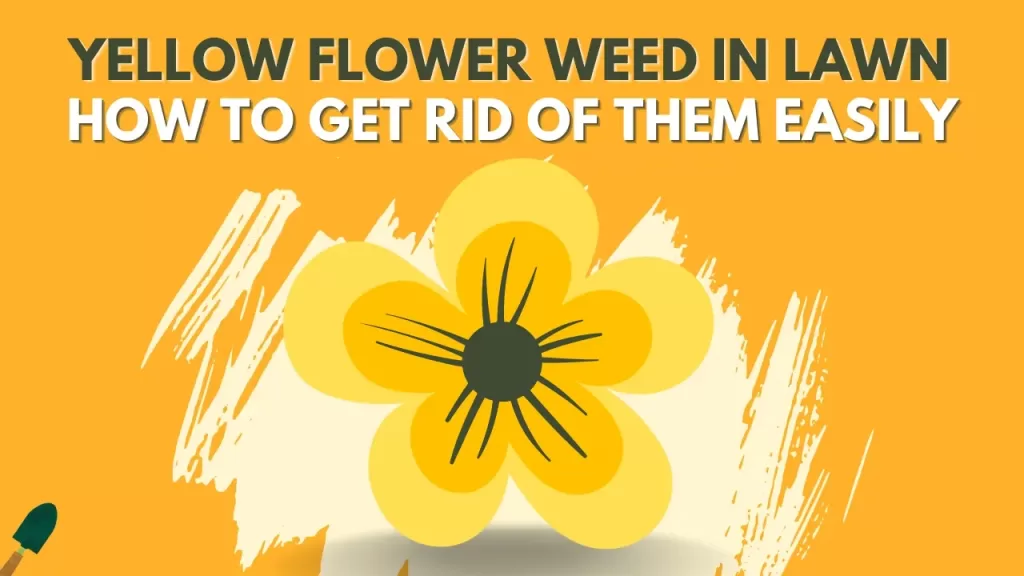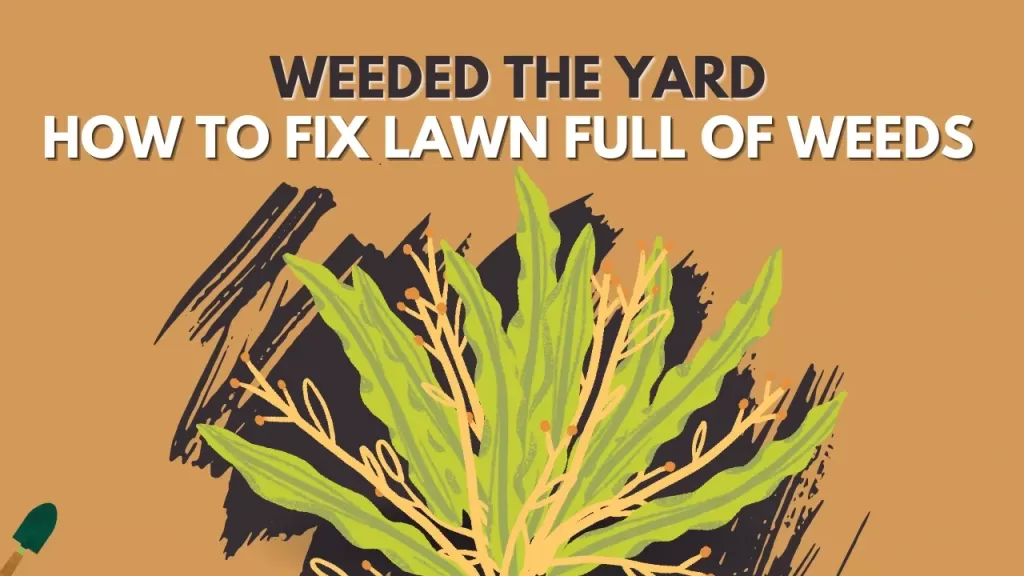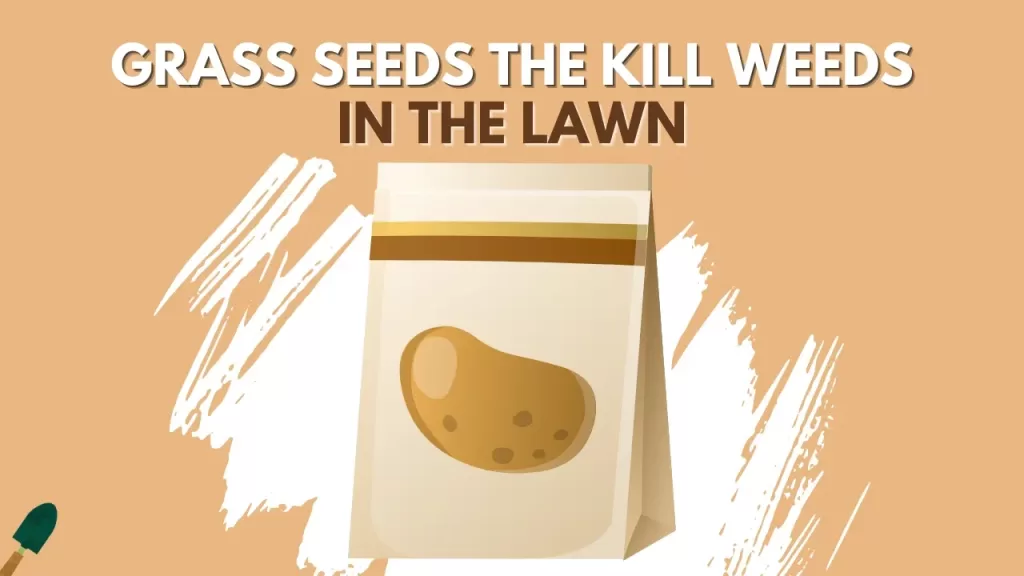Quackgrass or common couch grass is one of the cool-season perennial species of grass native to Europe, Asia, and Northwest Africa. They are also known to be seen in arctic biomes. It has been introduced into Northern climates for erosion control but more often they are one kind of a weed.
As the rhizomes spread very quickly, quackgrass covers the whole lawn in very little time and firms themselves with deep roots which make its removal very difficult though herbicides are applied.
So it becomes a big deal to handle them at times. But if done the right way and if you identify them in the initial stage of their spread then you can easily control and prevent them. Let’s see what quackgrass or couch grass is and how to get rid of it.
Quackgrass looks like a normal grass that has thicker leaves that have auricles that are like finger-like projections that grow around the stem. The quackgrass usually grows up to 3-4 feet tall which makes it very easy to identify from other grasses in the lawn. If you pull out the quackgrass from the round you will see shallow roots with long white rhizomes around them.
What is Quackgrass?
Quackgrass also known as Elymus repens, Agropyron repens or Elytrigia repens is a cool-season perennial plant, which means that it will come back in your lawn year after year in the growing season.
As the name suggests, the plant comes in a category of grass, it is a creeping grass that is considered to be a weed due to its growth and hardiness. It has a very deep root system with shallow roots on the top and rhizomes underneath it which can go as deep as 6 feet into the ground to establish itself.
Rhizomes are the part that makes the quackgrass a hardy plant and a weed which is difficult to remove once found in the lawn. The grass produces itself in two ways, one from the seed and the other with the help of rhizomes which can shoot out a new plant from the ground.
At first glance, the quackgrass resembles the look of ryegrass but it grows taller than ryegrass and has broad hairy leaves. It is sometimes also referred to as couch grass. Let’s see how to identify them.
How to Identify Quackgrass?
Quackgrass identification can be difficult as it looks like crabgrass or ryegrass as all of these grasses has long leaf blades, tapering one side but quackgrass differs a little bit. In a normal lawn, quackgrass identification is easy as the leaves are broader than other lawn grasses and have a burr-like texture on the leaves and stem.
If you pull up a plant, the roots will be thick and white but shallow. The roots will come out easily and break apart but other than roots you will find stem-like rhizomes which provide most of the nutrients to the plant. These rhizomes are very difficult to manage as they can grow new plants just like seeds.
If you spot some groups of quick sprouting grass in your lawn which is taller than your turf grass which has broader leaves, then you may have quackgrass in your lawn.
- The mature plant is tall and can grow up to 3 feet.
- Quackgrass leaves have auricles that are like finger projections that grow around the stem.
- Leaves are light green.
Quackgrass: Roots and Habitat
Quackgrass or Elymus repens is a perennial species native to Europe, Asia, And Northwest Africa. The grass was brought into the mild northern climates for forage and erosion control as it has a very deep and long root system but eventually, it turned out as a weed.
How did quackgrass get in my lawn?
Quackgrass is usually found in vacant lands, roadsides, or driveways that are not regularly maintained or mowed. Quackgrass is a cool-season grass which means it starts germinating and growing in fall and typically produces seeds in June.
These seeds then pollinate with the help of birds or wind to the new lawns or areas. After this, the seeds start to germinate in the lawn where they grow leaves and rhizomes. Straw bales are also something that can introduce new quackgrass seeds into your lawn in seeding.
The other way quackgrass can spread itself in new places is with the rhizomes. The rhizomes can grow sideways into the soil. These rhizomes can then travel from one lawn to another and establish themselves in the new place and produce new quackgrass plants.
Is Quackgrass good or bad for the lawn?
Quackgrass is not bad as it doesn’t cause any skin irritation or harm to pets, but quackgrass can quickly grow into your lawn and can choke out other turfgrass in the lawn by growing taller and thicker than them. Quackgrass also attracts birds on the lawn who love to eat seeds.
But quackgrass once established in the lawn can be very difficult to remove from the lawn. It’s also really hard to maintain quackgrass as it grows fast and thick with the help of rhizomes.
How to get rid of Quackgrass from your lawn?
Getting rid of quackgrass from your lawn can be difficult and the process depends on the infestation like if the grass is growing in spots or the whole lawn. The quackgrass as the name suggests is a grass that will not respond to many of the post-emergent weed herbicides in your lawn.
Removing the grass manually can also be difficult as it grows with the help of rhizomes which can grow deep in the lawn and removing all of them is not possible. Rhizomes can shoot new grass which means the grass will come back again after hand-pulling. So there are three ways you can remove quackgrass from the lawn. Let’s have a look:
- Chemical control – if the whole lawn is infested with quackgrass then the most viable way to eliminate it from the lawn is to take the help of the chemical herbicide. But a selective herbicide doesn’t work on quackgrass as it is also grass and not a weed. So to eliminate it you need a non-selective herbicide that contains glyphosate.
Glyphosate kills all the plants so be careful where you are applying this chemical to and remove any plant which you want in your lawn. After applying the herbicide to your lawn, you need to start the lawn again by preparing the soil and reseeding it.
- Tillering – tillering is a method that is used to eliminate quackgrass from the lawn when you don’t want to use any harmful chemicals in your lawn. But it is a very difficult and long process to eliminate quackgrass from the lawn.
Tillering can take weeks or months to fully eliminate quackgrass and will take a lot of effort. In tillering, you till your whole lawn to remove all the quackgrass but you can remove all the rhizomes from the soil which can grow new plants.
So new quackgrass plants will grow back in your lawn and you need to till your lawn again as soon as you see a new plant. The process will continue like this until the rhizomes don’t have any nutrients to produce new plants on the lawn.
- Mulching – Mulching the whole lawn after removing the plant from the lawn manually can be very effective to eliminate quackgrass from the lawn as it can’t grow and survive without sunlight. So blocking the sunlight to go to the soil or hit the sprouts of the plant will make it die out in several days.
Once all the rhizomes and sprouts are dead the possibility of quackgrass coming back to the lawn is very less. Once you are sure that there is no new growth in your lawn underneath the mulch you can reseed your lawn and grow it thick and beautiful.
Another thing you can do is to spread wood chips in the whole lawn, as these are also very effective to block growth as they also don’t have any moisture in them and block sunlight to go to the soil.
How to prevent Quackgrass?
Preventing quackgrass in your lawn is much easier than eliminating it after it has been established on the lawn. So let’s talk about how you can prevent the quackgrass from your lawn.
- Keep it thick – the best way to keep any unwanted plant away from your lawn is to not give it the space to grow by keeping the lawn thick and healthy. Fertilize your lawn and keep the soil healthy so that the grass can grow without any interruption and it can fill up all the bare spots in the lawn with tillering.
Overseed your lawn, at the start of every season to fill any bare spot in the lawn where the quackgrass or weeds can grow as it will be more susceptible than any other place in the lawn.
- Keep soil healthy – keeping the soil healthy and in good shape will also keep the quackgrass and other weeds away from the lawn as the weeds love to grow on bad and compacted soil where the turfgrass struggles to grow.
So to keep it healthy, aerate and dethatch your lawn if needed and make sure the soil is not compacted and can absorb all the nutrients easily. Aerated soil also promotes deep roots systems for turfgrass which make the grass healthy and drought resistant.
- Check the pH – weeds and other unwanted plants are most probably the ones that love to grow on an acidic lawn. On the other hand, turfgrass dies in an acidic lawn. So they promote healthy grass and to prevent weeds and quackgrass in your lawn, check the pH level of the soil.
A healthy lawn has a pH between 5.5 – 7.0. If you find the pH to be lower or higher, then apply garden lime to the lawn to restore the pH level of the soil.
- Monitor – Another thing you can do to prevent quackgrass from growing is to monitor your lawn now and then to see if any unwanted plant-like quackgrass is growing in your lawn or not.
If you find anything you can easily pull it out from the lawn while it hasn’t established itself fully into the lawn and mulch that area to avoid any other growth. This can be very helpful as if not monitored it can be very difficult to remove afterward.
- Check what comes in – another thing you can do is to check whenever you are buying any stuff for your lawn, be it the soil, compost, seed, or mulch. Properly check these for any kind of unwanted plant or seeds in them. And if you find any of it, remove it and prepare the stuff properly before introducing it to the lawn as in many times the weeds or other unwanted plants come to our lawn from the outside from these things.
What are the differences between Quackgrass and Crabgrass?
| Quackgrass | Crabgrass |
|---|---|
| Quackgrass is cool-season grass. | Crabgrass is a warm-season grassy weed. |
| Quackgrass has a shallow root system with rhizomes that can grow long and deep into the soil. | Crabgrass roots are shallow and don’t go deep into the ground. |
| Quackgrass grows in loamy and sandy soil which is loose and aerated. | Crabgrass usually grows on compacted soil due to its shallow root system, where other plants can’t grow |
| Quackgrass is a perennial weed which means it will be growing in your lawn for years. | Crabgrass is an annual plant that dies after one season. |
| Quackgrass leaves have auricles that grow around the stem. | Crabgrass leaves grow independently from the stem of the plant. |
| To eliminate quackgrass you need to remove the whole plant or kill it from the lawn. | To remove crabgrass from the lawn you just need to prevent it next year by stopping the germination in your lawn. |
| Quackgrass has broader leaves than normal turf grass which makes it look different | Crabgrass stems grow in all the directions sideways making them look like crab legs. |
| Quackgrass grows very tall and can grow up to 3 feet. | Crabgrass grows very short in the lawn, usually, 3 to 5 inches tall as the stems grow sideways. |
| Quackgrass can grow from seeds as well as from rhizomes. | Crabgrass only grows from the seeds it has produced a year before. |
Which herbicide to use for Quackgrass?
To eliminate quackgrass in your lawn, you need to apply a non-selective herbicide that contains Glyphosate like Roundup. Glyphosate kills all the grasses as well as plants in the lawn and can eliminate every plant from your lawn so be careful where you apply this herbicide. You can’t apply a selective herbicide to kill Quackgrass as it is grass and it doesn’t respond to the selective herbicide.
Hope you find out all the answers about quackgrass and how to identify it.




